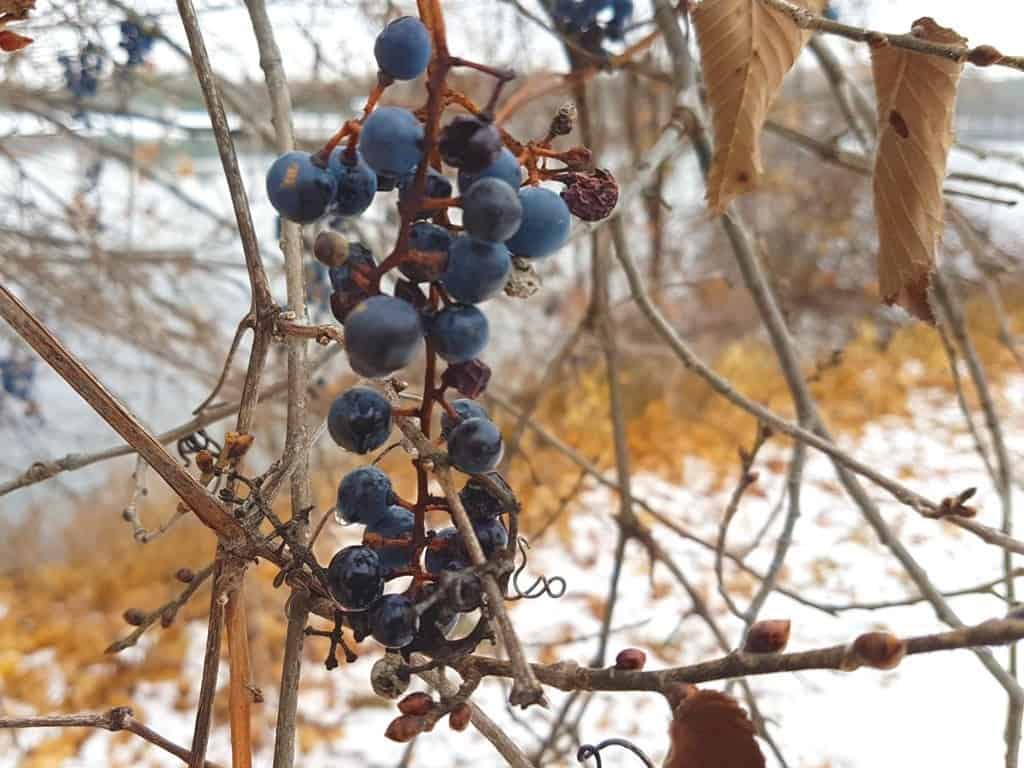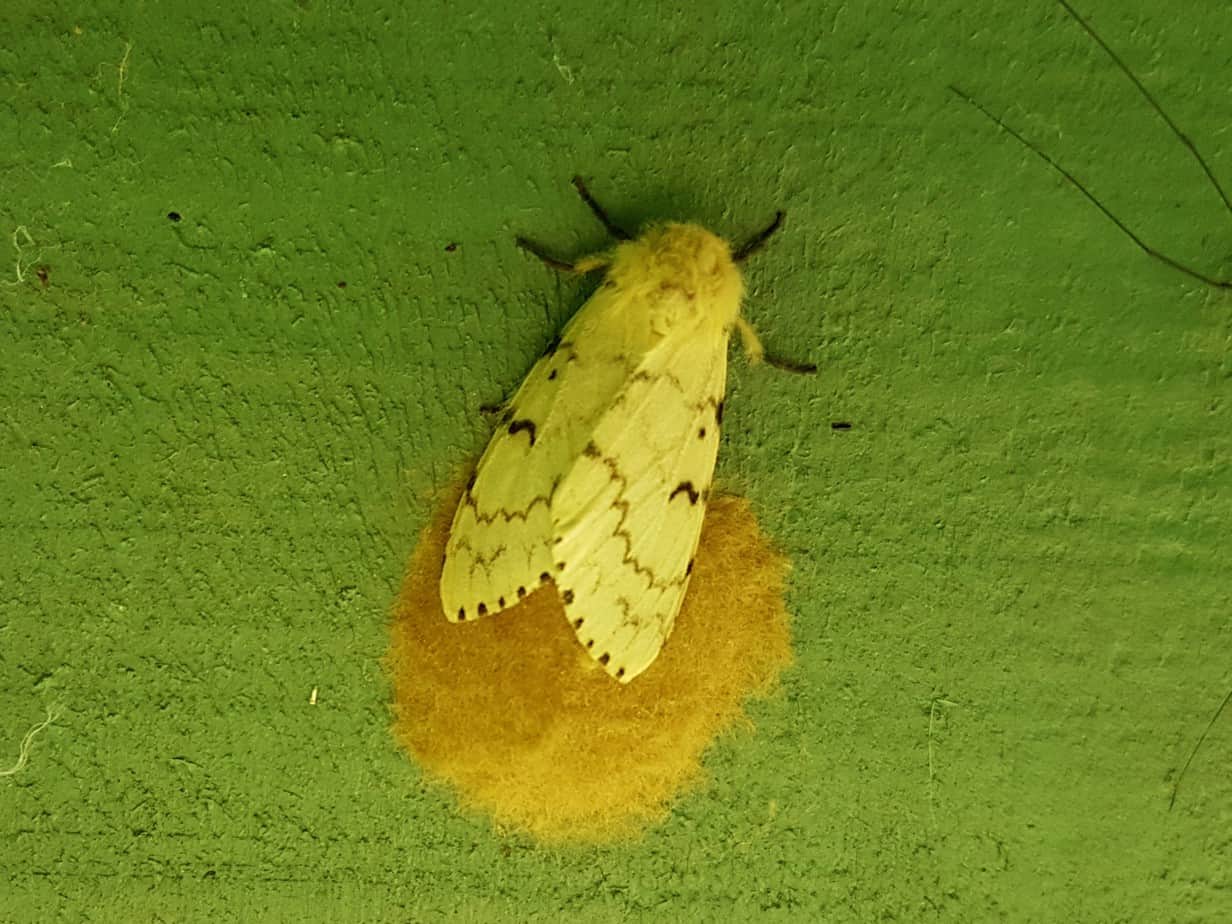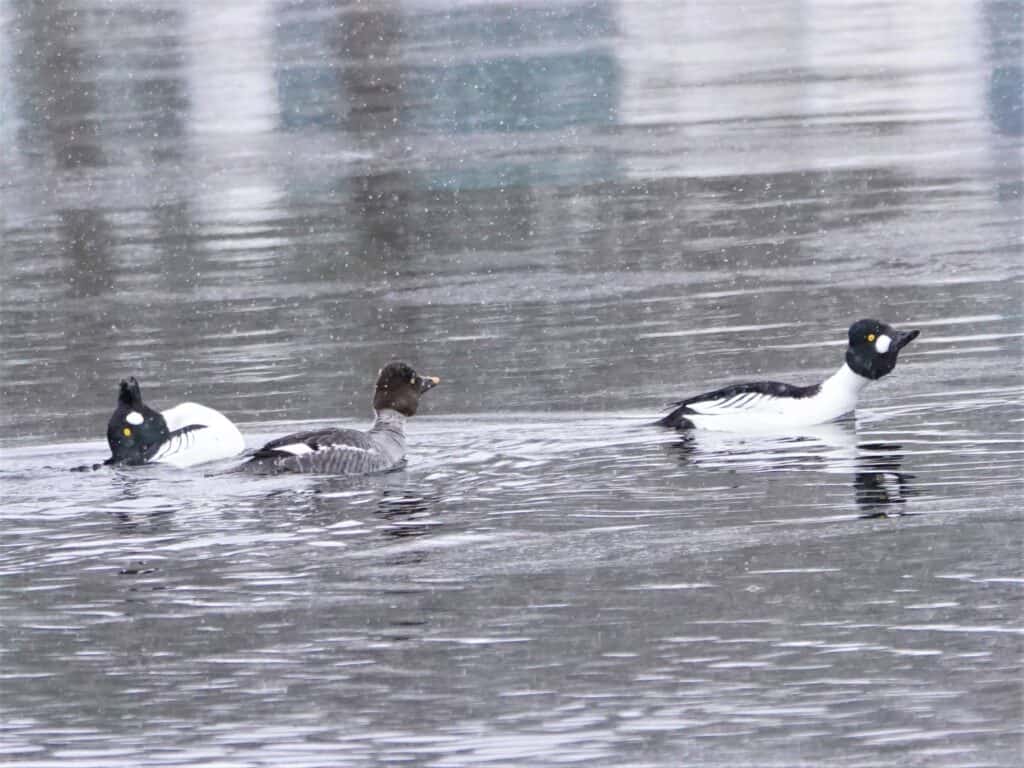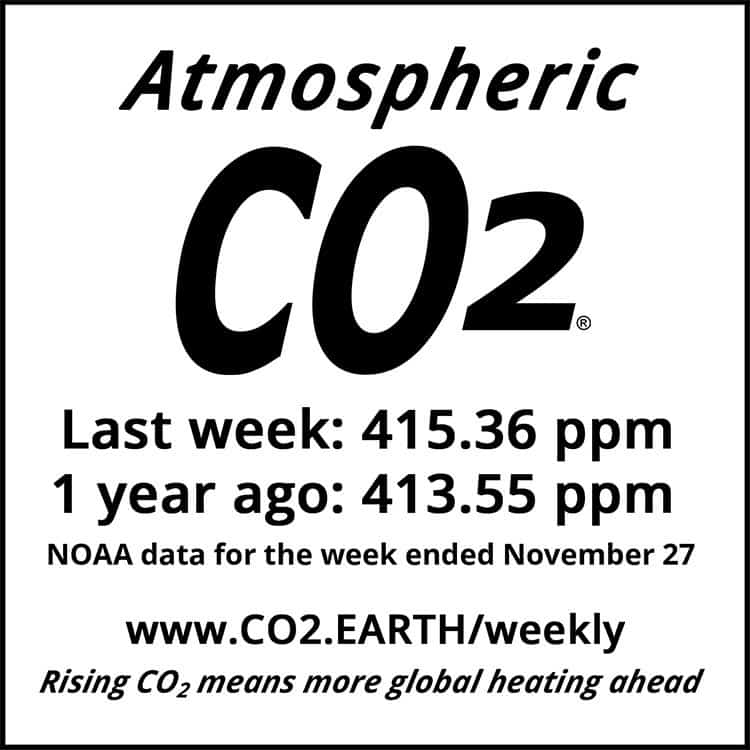Peterborough Examiner – December 3, 2021 – by Drew Monkman
Looking ahead to what nature has in store this winter nature
As is now the pattern with a changing climate, this fall in Peterborough was marked by extreme temperature. October was an amazing 5.0 C warmer than normal – most likely our warmest October ever. In fact, the entire Northern Hemisphere experienced its warmest October since records began. Scientists believe that 2021 as a whole is on track to be among the 10 warmest years on record for the globe.
Environment Canada is predicting above-normal temperatures across our region this winter but also higher-than-average amounts of precipitation. La Niña conditions (colder than normal water temperatures in the Pacific Ocean) have developed and are affecting the Jet Stream. The forecast is for more storms than usual and significant amounts of snow and rain.
As a reminder of what to watch for in nature in the coming months, I have prepared the following list of highlights.
DECEMBER
- If you aren’t already doing so, consider buying a real Christmas tree this year. They are the greenest choice. Christmas tree farms are carbon sinks, soaking up carbon dioxide emissions. Real trees are also 100% biodegradable and provide a much-needed connection to the natural world.
- Watch for snowy owls. One has already been seen at the south end of Ashburnham Road. Snowy owls are usually observed in fields and open areas like the Peterborough Airport.
- According to Dr. Jeff Bowman, a wildlife ecologist at Trent University and MNRF, the abundant seed crop produced by nearly all kinds of trees and shrubs this year should lead to a high winter survival rate for small mammals like mice and voles. The breeding population will therefore be high next spring which should mean lots of mice and voles next summer. Small mammal numbers lag behind seed crops by a year. To complicate the picture, however, we have to factor in this year’s acorn crop failure. Fall 2020 was a big acorn year and provided abundant food for a host of small mammals, including mice and squirrels. Their numbers this summer were therefore quite high in many areas. Fall 2021, however, was an acorn bust, due to the LDD moth defoliation which devastated oaks. LDD (Lymantria dispar dispar) is the new name for the culturally-offensive term of “gypsy moth.” Bowman thinks that the lack of acorns could lead to less winter survival in areas where acorns are a key food, hence low population numbers next summer. As with most things in nature, making forecasts is complicated!
- This fall’s large crop of wild grape – a favourite food of robins – may keep many of these birds in the Kawarthas this winter.
- Ducks lingering on local lakes and rivers until freeze-up include common goldeneye and both common and hooded mergansers. Some goldeneyes remain all winter.
- The Peterborough Christmas Bird Count will be held on Sunday, December 19. Birders of all levels of experience are welcome to participate. For more information, contact Martin Parker at mparker19@cogeco.ca.
- Tuesday, December 21, marks the winter solstice and the first day of winter. The sun rises and sets at its southernmost points on the eastern and western horizons. What’s most noticeable, however, is how short the days are. Daylight in December only lasts 8 ¾ hours. Compare this to 15 ½ hours in June!
- There’s a good possibility that evening grosbeaks, pine siskins, and maybe common redpolls will show up at feeders this winter. It’s also looking like a good winter for bohemian waxwings and both red and white-winged crossbills.
JANUARY
- Even though the days grow longer after the solstice, they begin to do so quite slowly. In fact, in the first week of January sunrise is later than at any other time of the year.
- Coyotes are quite vocal during their January to March mating season. They can often be heard right on the edge of Peterborough.
- Throughout the late fall and winter, eastern gray squirrels (most of which are black in our area) are often seen high up in maples, where they dine on the keys.
- Dark-eyed juncos are one of the most common winter birds at feeders. Their white outer tail feathers are distinctive.
- Watch for Cooper’s hawks. They have adapted so well to human-altered habitats that they often make kills at backyard feeders. It’s important to accept that raptors are part of nature, too, and an integral part of a healthy ecosystem.
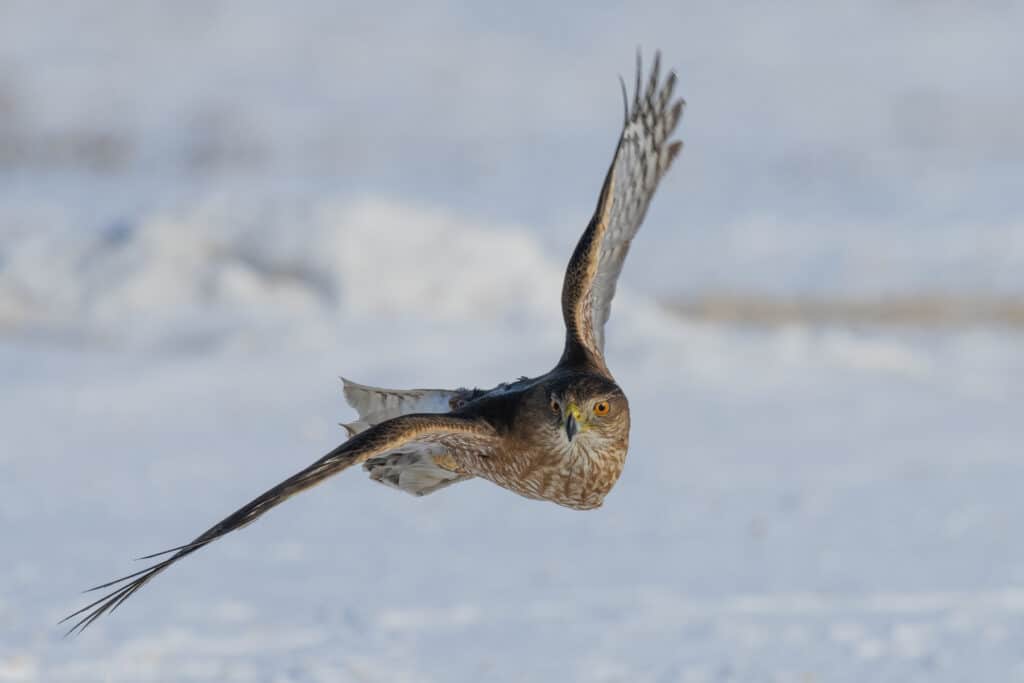
FEBRUARY
- Although tentative at first, bird song returns in February as pair bonds are established or renewed. Black-capped chickadees, northern cardinals, and white-breasted nuthatches usually start singing this month.
- Gray squirrels are mating and can often be seen streaming by in treetop chases as a group of males pursues a female.
- The Great Backyard Bird Count takes place from February 18 through the 21st. This citizen science event engages bird watchers of all levels of expertise to create a real-time snapshot of the whereabouts and relative abundance of birds in mid-winter. Anyone can participate. Go to https://www.birdcount.org/ for details.
- Common goldeneyes put on an elaborate courtship display in late winter. The male thrusts his head forward and then back towards his rump. With his bill pointing skyward, he utters a squeaky call. Just north of Lock 25 on the Otonabee River can be a good spot to see these displays.
MARCH
- Duck numbers increase as buffleheads and hooded mergansers start arriving.
- Chipmunks make their first appearance above ground since late fall. They are somewhat active all winter, however, making repeated trips to their underground storehouses for food.
- By mid-March, the first northward-bound turkey vultures are usually seen. Other new arrivals include robins, red-winged blackbirds, grackles, and song sparrows.
- For anyone paying attention, the increase in bird song is hard to miss. If you don’t already know the voices of common songsters, late winter is a great time to start learning them. Allaboutbirds.org is a good resource. Better still, get the free Merlin app. It now has a feature that provides immediate identification as a bird sings.
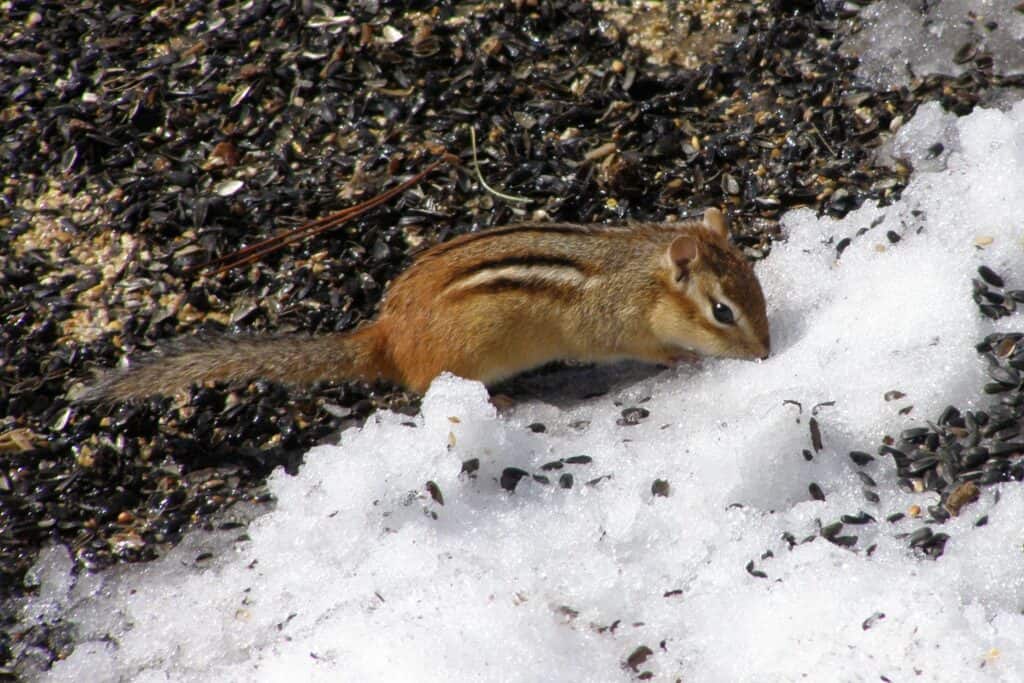
CLIMATE CHAOS UPDATE
Quotes to inspire action:
“When you are taking action for climate, it’s not for climate change, it’s for you. It’s for your family, it’s for everything you love, everyone you love, every place that you love – that’s why you’re doing it.” – Katharine Hayhoe, Canadian climate scientist
“Action is the antidote to despair.” – Edward Abbey
“Climate change isn’t an “issue” to add to the list of things to worry about, next to health care and taxes. It is a civilizational wake-up call. ” – Naomi Klein
“The earth is not dying. It is being killed, and the people killing it have names and addresses.”– Bruce Duncan Phillips
“The world will not be destroyed by those who do evil, but by those who watch them without doing anything.” – Albert Einstein
CO2 ppm: A key measure of how much climate progress the world is making is the amount of CO2 in parts per million (ppm) in the atmosphere and whether it is rising. The pre-industrial level was 280 ppm and the highest level deemed safe is 350 ppm. The graphic below shows the unsettling current readings.
Take action: To see a list of ways YOU can take climate action, go to https://forourgrandchildren.ca/ and click on the ACTION buttons.
